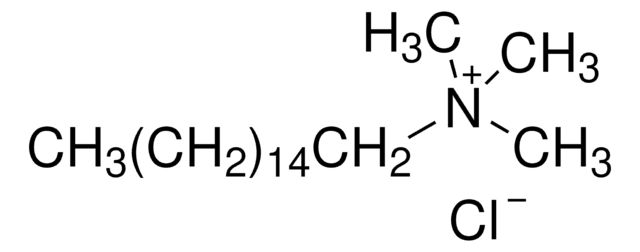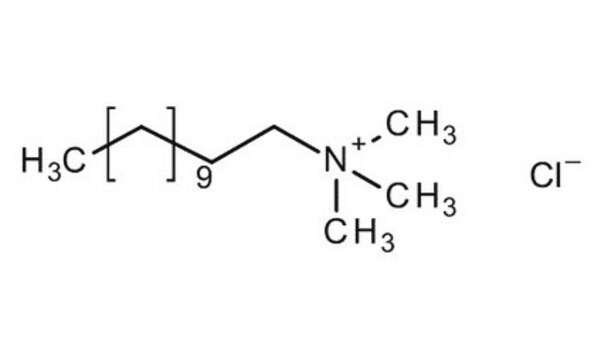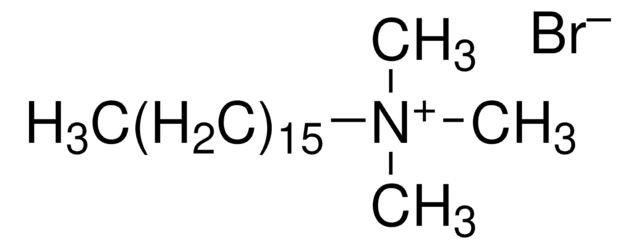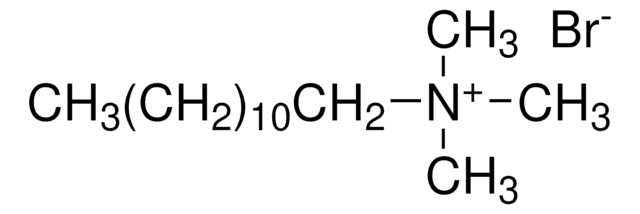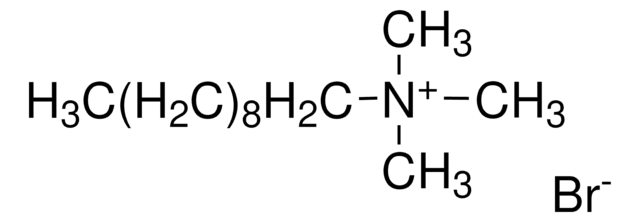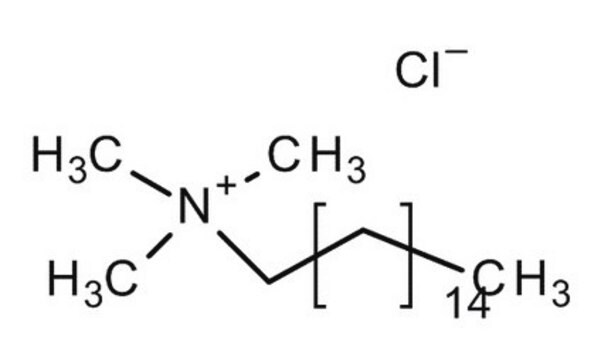17104
Dodecyltrimethylammonium chloride
purum, ≥98.0% anhydrous basis (AT)
Synonym(s):
DTAC
About This Item
Recommended Products
description
cationic
Quality Level
grade
purum
assay
≥98.0% anhydrous basis (AT)
form
solid
mol wt
263.89 g/mol
mp
37 °C
SMILES string
[Cl-].CCCCCCCCCCCC[N+](C)(C)C
InChI
1S/C15H34N.ClH/c1-5-6-7-8-9-10-11-12-13-14-15-16(2,3)4;/h5-15H2,1-4H3;1H/q+1;/p-1
InChI key
DDXLVDQZPFLQMZ-UHFFFAOYSA-M
Looking for similar products? Visit Product Comparison Guide
General description
Application
- Polyethylene terephthalate depolymerization: Dodecyltrimethylammonium chloride was applied in the enzymatic depolymerization of polyethylene terephthalate, illustrating its utility in enhancing the efficiency of plastic degradation processes (Kawai et al., 2022).
signalword
Warning
hcodes
Hazard Classifications
Acute Tox. 4 Oral - Aquatic Acute 1 - Eye Irrit. 2 - Skin Irrit. 2
Storage Class
13 - Non Combustible Solids
wgk_germany
WGK 3
flash_point_f
Not applicable
flash_point_c
Not applicable
ppe
dust mask type N95 (US), Eyeshields, Gloves
Choose from one of the most recent versions:
Already Own This Product?
Find documentation for the products that you have recently purchased in the Document Library.
Customers Also Viewed
Our team of scientists has experience in all areas of research including Life Science, Material Science, Chemical Synthesis, Chromatography, Analytical and many others.
Contact Technical Service
